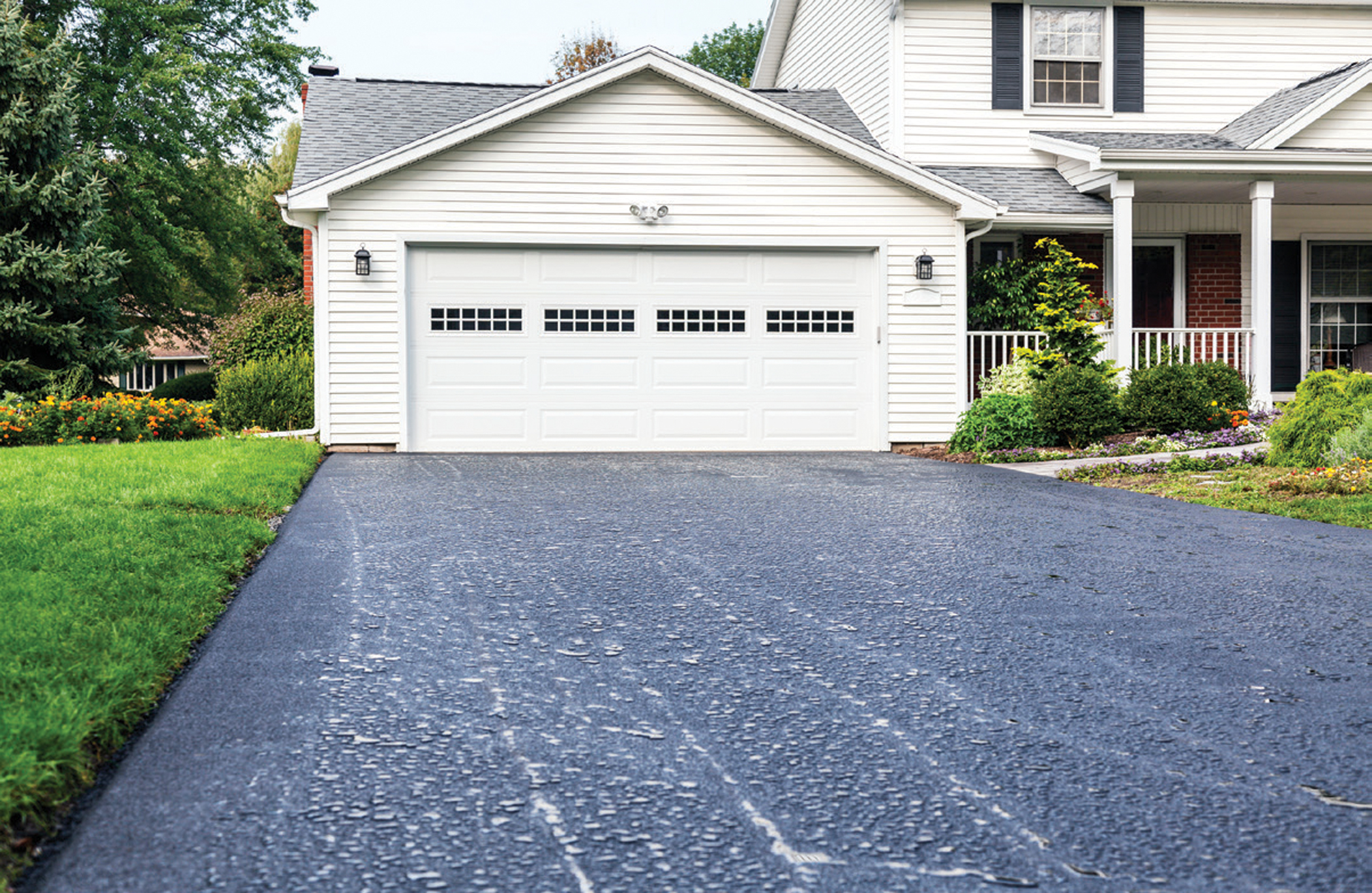Unleash the Possible: Regrading and Asphalt Sealing for Industrial Spaces
Unleash the Possible: Regrading and Asphalt Sealing for Industrial Spaces
Blog Article
Warm Mix Asphalt: A Lasting Option for Sidewalk
Warm Mix Asphalt (HMA) has arised as a leading lasting selection for pavement services, using a myriad of cutting-edge innovations and ecological advantages. As the demand for environment-friendly building practices grows, checking out the subtleties of HMA's sustainability can supply beneficial understandings right into the future of pavement solutions.
Environmental Benefits of Hot Mix Asphalt

Additionally, Warm Mix Asphalt aids to minimize metropolitan warm island effects. Its dark color absorbs sunshine, reducing the amount of warmth showed back right into the environment compared to lighter-colored pavements. This can reduce ambient temperature levels in urban areas, decreasing the demand for air conditioning and ultimately minimizing energy intake.
In enhancement, Hot Mix Asphalt contributes to improved stormwater management. Its porous nature enables water to infiltrate the pavement and recharge groundwater products, minimizing drainage and the risk of flooding. These ecological benefits make Warm Mix Asphalt a lasting selection for leading freeways and roads.
Energy Efficiency in HMA Production
Is power efficiency a crucial variable in the manufacturing of Hot Mix Asphalt (HMA)? Definitely. Energy plays a significant function in the production of HMA, affecting both cost and ecological sustainability. One vital element of energy performance in HMA production is making use of cozy mix asphalt (WMA) technologies (commercial parking lot paving). WMA permits the mixing and positioning of asphalt at lower temperature levels contrasted to typical hot mix asphalt, resulting in lowered energy consumption throughout production. This procedure not only decreases fuel use however also reduces greenhouse gas discharges, making it a more eco-friendly choice.
Furthermore, advancements in plant modern technologies have led to even more energy-efficient HMA manufacturing processes. By maximizing power use in HMA production, the market can reduce its carbon impact while preserving premium pavement products.
Recyclability of Warm Mix Asphalt
The recyclability of Hot Mix Asphalt (HMA) is an essential aspect of its sustainability and lasting ecological effect. HMA is just one of one of the most recycled products in the USA, with over 100 million lots of recovered asphalt pavement (RAP) being reused each year in new pavement building and construction. Recycling HMA supplies numerous ecological advantages, such as decreasing the need for virgin products, lowering energy intake throughout production, and lowering the amount of waste sent to land fills.
The procedure of recycling HMA entails grating the existing sidewalk, crushing it right into smaller sized items, and mixing it with new aggregate and asphalt binder to develop see post a recycled mix. Generally, the recyclability of HMA plays a considerable duty in promoting sustainable techniques within the pavement industry.

Long-Term Efficiency of HMA
Asphalt sidewalks show sturdiness and strength over a prolonged duration, reflecting the long-lasting performance of Warm Mix Asphalt (HMA) The longevity of HMA can be attributed to its ability to hold up against rush hour tons, rough weather condition conditions, and the results of aging. Research studies have actually revealed that well-designed and appropriately constructed HMA pavements can last for two decades or more with normal maintenance. The trick to making the most of the long-lasting performance of HMA depends on making use of top notch materials, following best techniques in building and construction, and implementing efficient upkeep techniques. Correct drainage, routine evaluations, and that site timely repairs are vital for protecting the structural honesty of HMA sidewalks with time. Additionally, developments in HMA technology, such as the usage of polymer-modified binders and warm mix asphalt, have additionally improved the toughness and long life of HMA pavements. By focusing on high quality building and upkeep techniques, HMA remains to confirm itself as a cost-effective and lasting remedy for long-lasting sidewalk framework.

HMA: Toughness and Sustainability
Showing both longevity and sustainability, Hot Mix Asphalt (HMA) has ended up being a keystone in the building of long-lasting pavement frameworks - commercial parking lot paving. HMA's sturdiness stems from its ability to stand up to heavy loads, harsh climate condition, and high website traffic quantities, making it a reputable choice for highways, freeways, and flight terminal paths. The structure of HMA, which typically consists of aggregates, binder, and filler, plays an essential role in enhancing its durability and resistance to use and tear
Moreover, HMA's sustainability lies in its recyclability and energy-efficient manufacturing process. The ability to recycle recovered asphalt sidewalk (RAP) in brand-new HMA mixtures lowers the need for virgin materials and decreases the ecological impact of pavement building and construction and upkeep. Additionally, the energy efficiency of creating HMA hinges on its reduced mixing temperature levels contrasted to various other sidewalk materials, leading to lowered power intake and greenhouse gas discharges.
Final Thought
In conclusion, warm mix asphalt (HMA) offers a sustainable option for sidewalk with its environmentally pleasant features. HMA's recyclability, energy efficiency in manufacturing, and lasting sturdiness make it an environment-friendly choice for roadway building.
HMA is one of the most recycled products in the United States, with over 100 million loads of recovered asphalt sidewalk (RAP) being recycled every year in new sidewalk building.The process of recycling HMA entails grating the existing pavement, crushing it right into smaller items, and mixing it with new accumulation and asphalt binder to develop a recycled mix.Asphalt sidewalks demonstrate toughness and strength over a prolonged period, reflecting the lasting efficiency of Warm Mix Asphalt (HMA) Additionally, innovations right here in HMA modern technology, such as the use of polymer-modified binders and warm mix asphalt, have further boosted the longevity and durability of HMA pavements. The capability to reuse redeemed asphalt sidewalk (RAP) in new HMA combinations minimizes the demand for virgin materials and decreases the ecological influence of sidewalk construction and upkeep.
Report this page